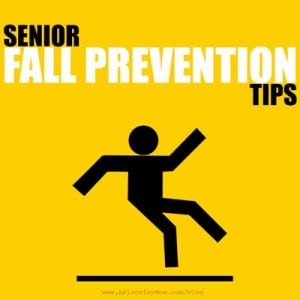
There are 30 million migraine sufferers in the U.S. alone. Women are thrice as likely to have them, but both sexes have to address the issues raised by them. Here are some important facts regarding migraines and myths surrounding them, based on questions I’ve actually been asked. And yes, regarding the lead picture, I refuse to say she’s lion.
Myth #1: I can’t help if I get migraines. They’re hereditary, right?
There are a few things about being predisposed to having migraines I want you to know.
- If you have one parent with migraines, there’s a 50% chance you’ll have them.
- If both your parents have migraines, there’s a 75% chance you also will.
- 4 of 5 migraine sufferers have a relative with migraines.
These facts represent a predisposition. In order to have migraines, you must have triggers that will set off the migraine. That’s a vital consideration in your effort to prevent, reduce and effectively treat your migraines.
Myth #2: This is a woman’s disease. They stress out more and are more emotional. That’s why they get headaches.
It is true that there is a strong hormonal component to migraines, particularly regarding estrogen and progesterone. In fact, the incidence of migraines between the sexes is pretty equal until puberty. Migraines are increased during pre-menstruation, when hormone levels are high. Menopause may ease migraines. All of this said, men still get migraines as well because of the presence of other triggers. It certainly does not appear to be true that women suffer stress at a disproportionate rate sufficient to claim it as more of a trigger in women than in men. Both sexes’ stress responses include release of substances that expands blood vessels, causing migraines.
Myth #3: My migraines won’t get any easier as I get older.
Along the same lines as Myth #2, diminished hormone production that accompanies aging may help explain how most migraine sufferers have less frequent and less intense migraines after age 40. Because of hormonal fluctuations during perimenopause, this reduction may not be seen.
- Most people who get migraines have fewer headaches and their headaches aren’t as strong once they hit 40. However, this may not be the case for women going through perimenopause. If hormones are a trigger for a woman’s migraines, then she could have more headaches during the period around menopause.
Myth #4: Once I’m diagnosed with migraines, only narcotics will help.
First of all, trigger identification and prevention is vital. Migraine trigger management and treatment is a topic unto itself, but I’d like to point out a few important considerations.
- Think triggers first and last. The list of triggers includes foods (think chocolate, alcohol, aged cheese and caffeine; results vary with the individual), cold, stress, smoking and certain medications. Alterations in mealtimes, exercise and sleep patterns must be monitored as well, these tend to exacerbate migraines. Migraine sufferers are advised to maintain a headache log to identify triggers as things occur.
- A special comment about caffeine: It helps some people, but for others it’s a migraine trigger, particularly if you’re a heavy user. If you don’t drink many caffeinated beverages, one may help if you’re having a less than severe migraine. If you’re taking enough in to create a caffeine dependency, overnight withdrawal may be enough to trigger a morning migraine.
Patients must become their own experts on how and when you use different medications.
- I hope you and your primary care physician have discussed and have you focusing on your abortive medications. These medicines can stop further progression of migraines if used early enough at the first sign of a migraine.
- Painkillers have consequences. As tolerance to and dependence on narcotics develop, withdrawal symptoms become more prominent. Rebound headaches are a major component of these symptoms. That’s a vicious cycle that doesn’t have a happy ending. It’s important to note that your health care professionals do appreciate there is a difference between being drug seeking and drug dependent.
Myth #5: Migraines really don’t cause problems beyond the headaches, right?
Wrong. If you have migraines, take special care to ensure you have a healthy heart and a low risk for strokes. Refer to the Straight, No Chaser archives (or just type in the search engine to the right) for information on stroke recognition and heart attack recognition. If you’re a female and have migraines with aura (certain warning symptoms that precede you migraine like nausea, dizziness, light sensitivity, and seeing zig-zag lines), your heart attack risk climbs by over 90% and your stroke risk more than doubles (increases by up to 108%). The presence of migraines without aura also raises the risk of heart attack and stroke but by lesser amounts.
As per routine at Straight, No Chaser, the message is simple, but execution is key. Prevention is protection, and knowledge is power. Check back this afternoon for life threatening causes of headaches, and feel free to send questions and comments. Take good care.























